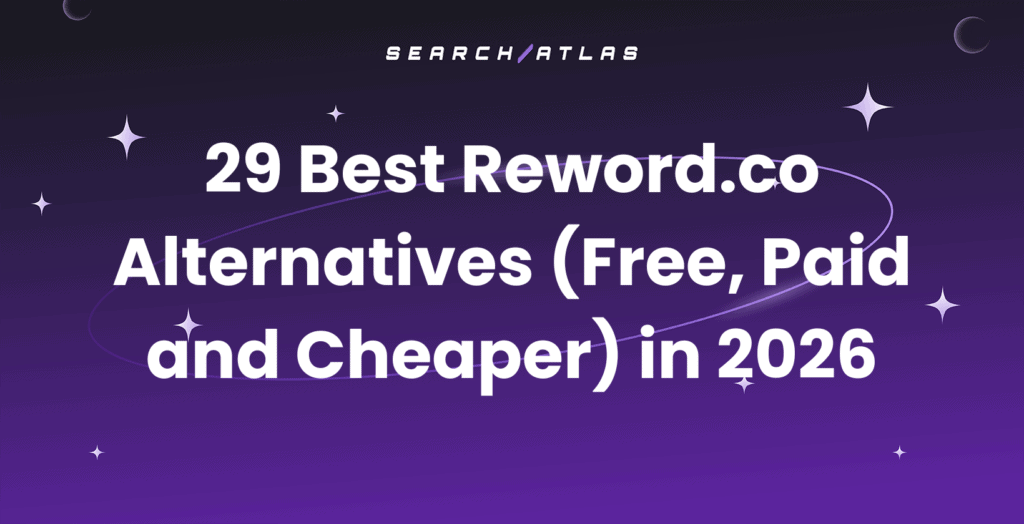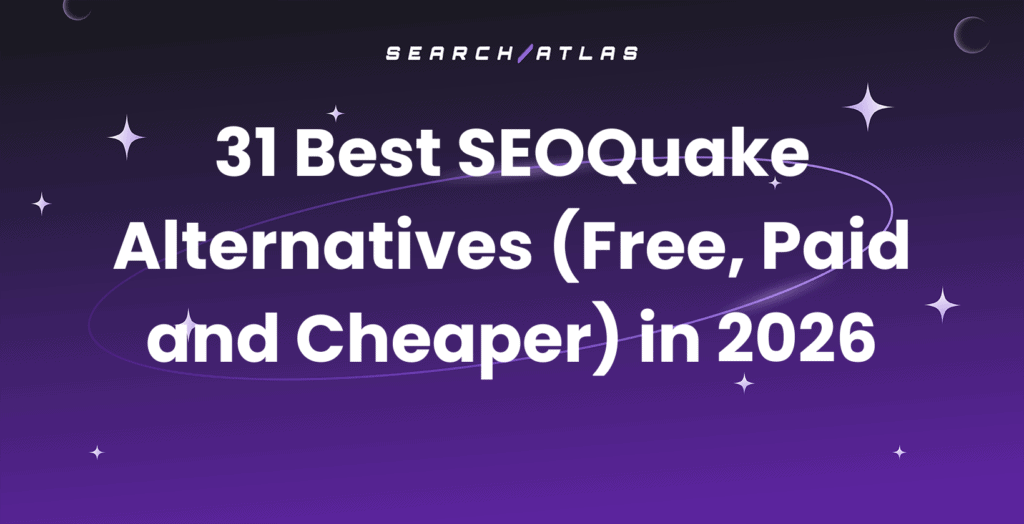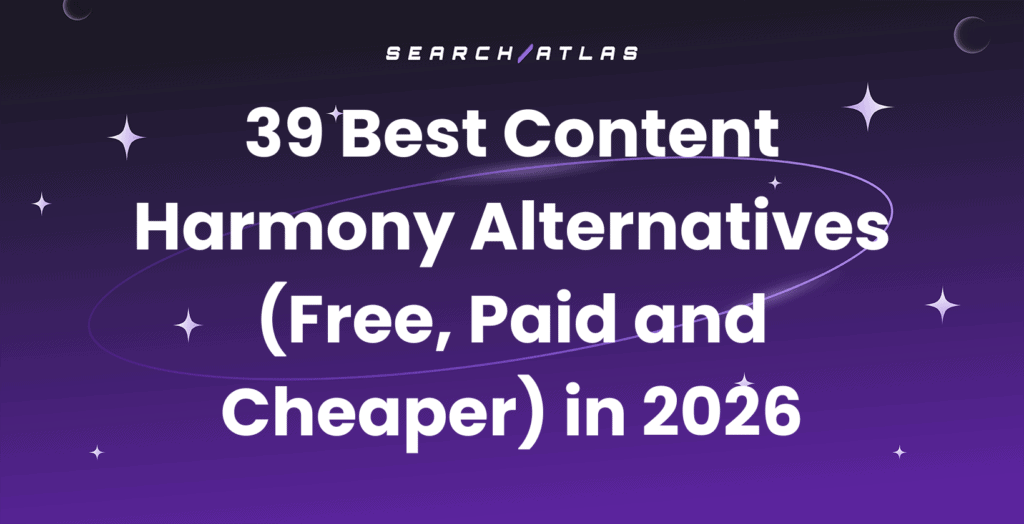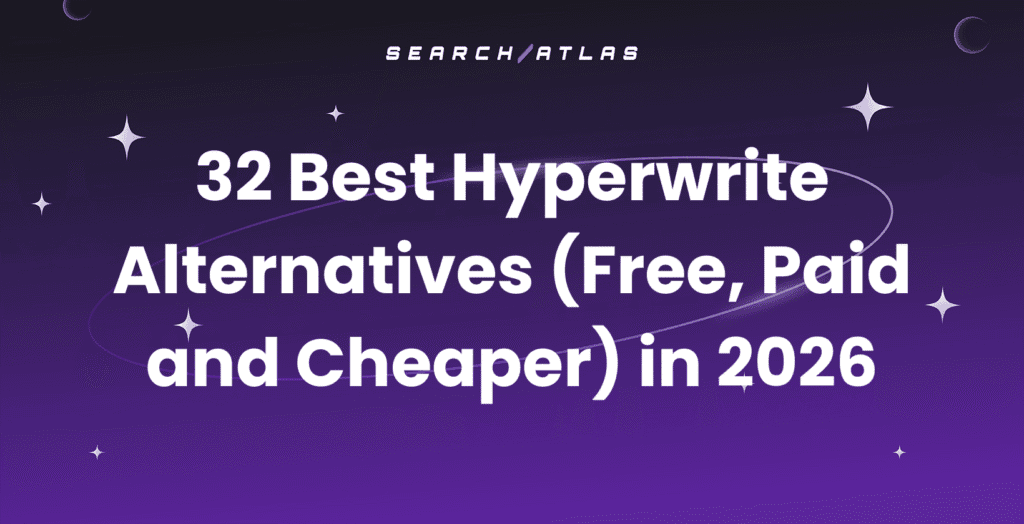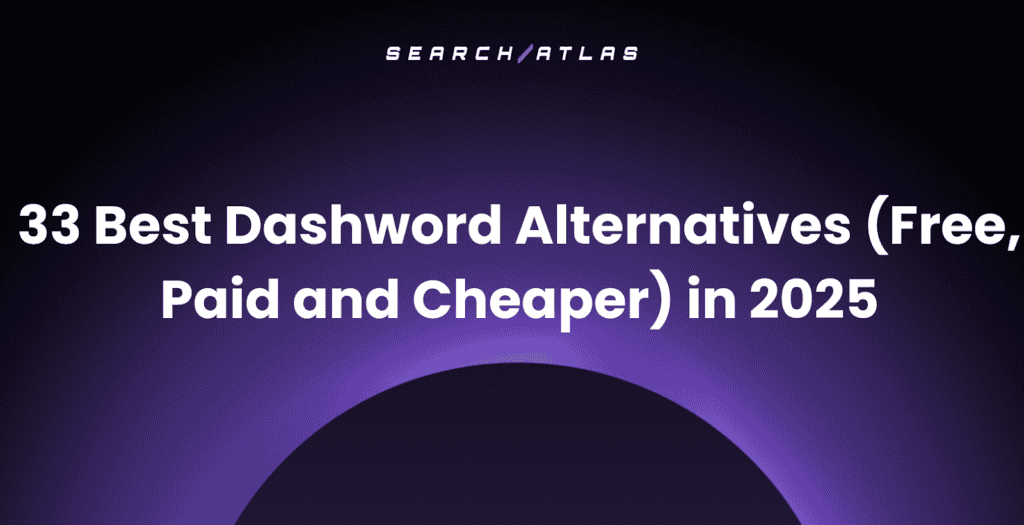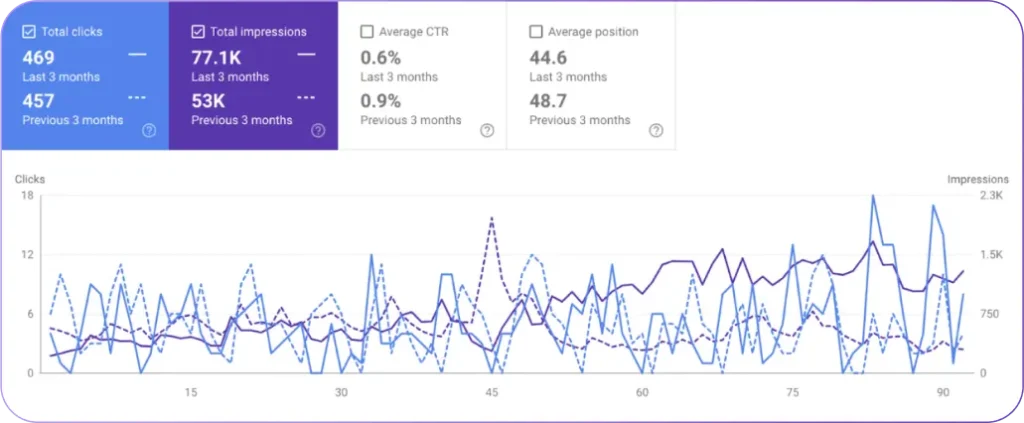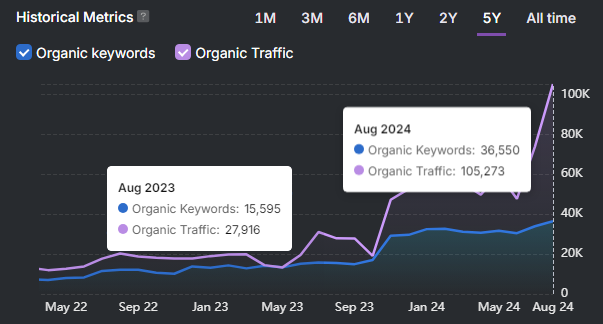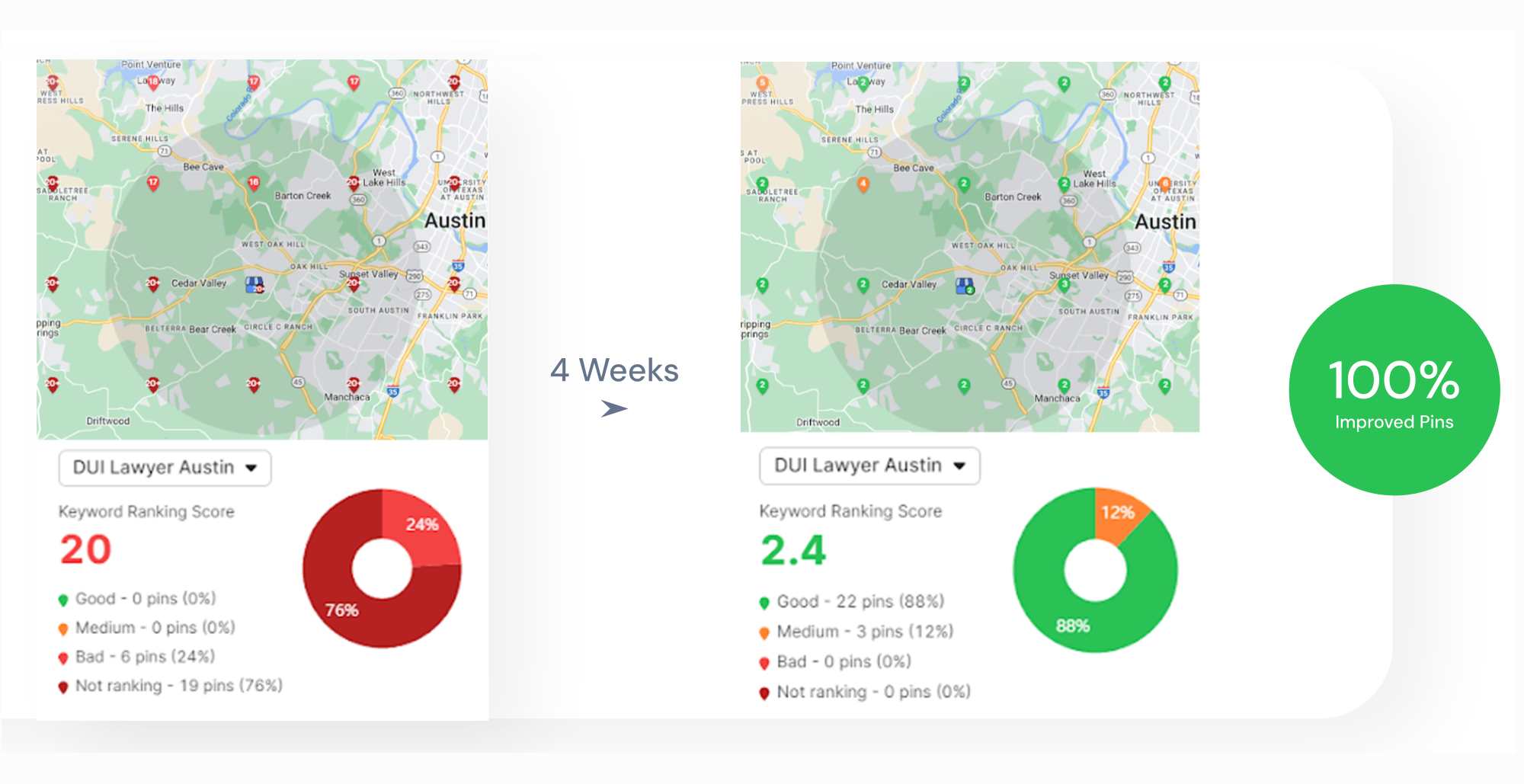Creating SEO content that ranks requires systematic planning and technical optimization. This checklist covers keyword research, audience identification, content creation, multimedia optimization, and ongoing maintenance. These elements work together to satisfy search engines and users, driving organic traffic and building topical authority.
1. Create a workflow
To create a workflow, build a step-by-step process that turns ideas into content that ranks well in search results. We explain in more detail below.
Research
Find topics people actually search for instead of guessing what to write about. Use Content Planner to get a complete content plan in minutes. Input one main keyword from your niche, and the tool gives you over 300 keyword clusters, each representing a potential article topic. Each cluster includes monthly search volume, keyword intent, difficulty scores, cost-per-click, and potential traffic data. Use these insights to pick topics with the best chances of ranking well.
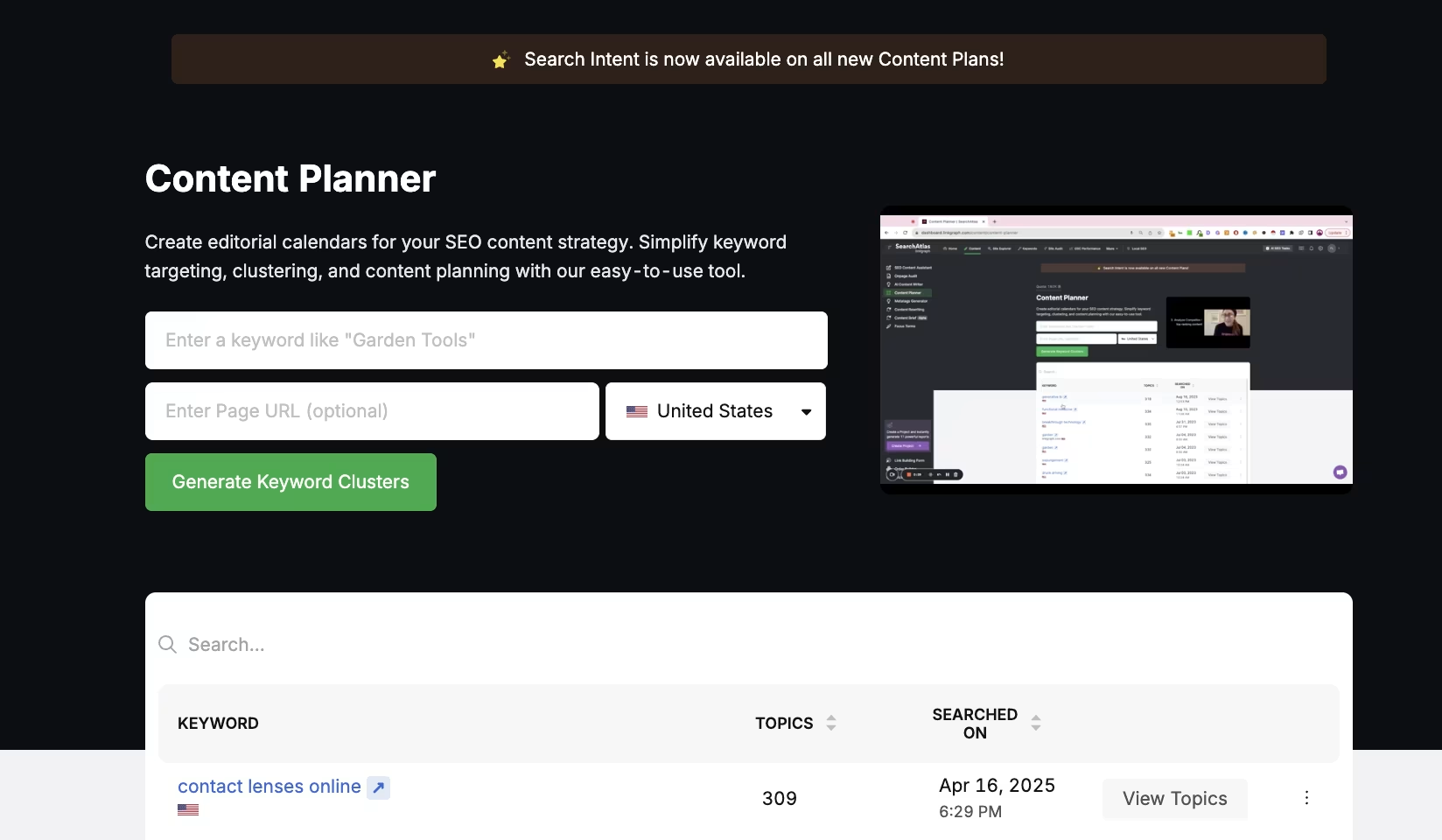
Plan Your Content Topics
Organize your content ideas into groups of related topics that work together. Use a Topical Map Generator to structure your content into a well-organized hub of connected topics.
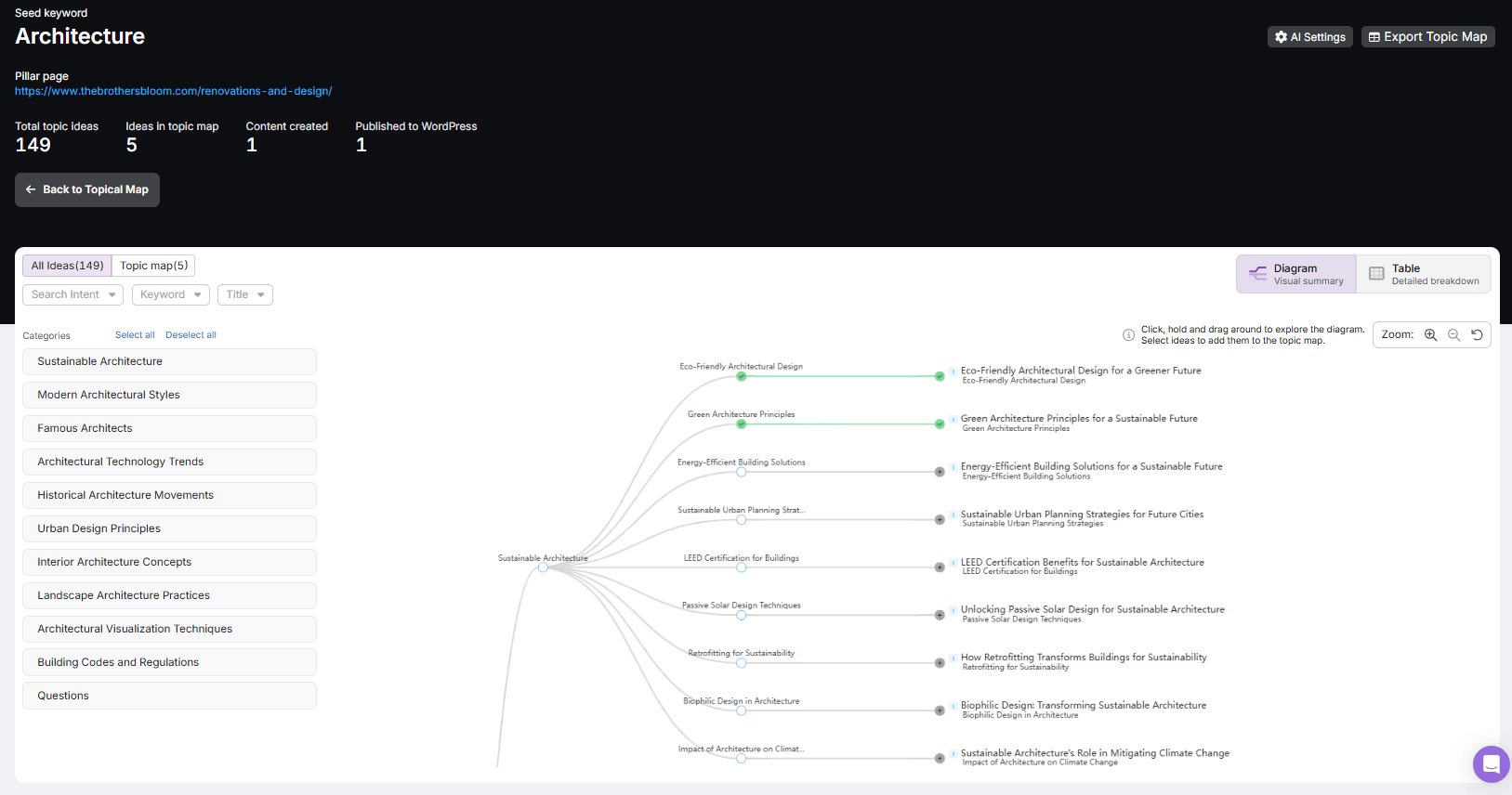
This tool helps you cover your niche from multiple angles, which strengthens your topical relevance and makes ranking easier. Track your Topical Dominance metric to see how well your site covers subjects compared to competitors and find content gaps.
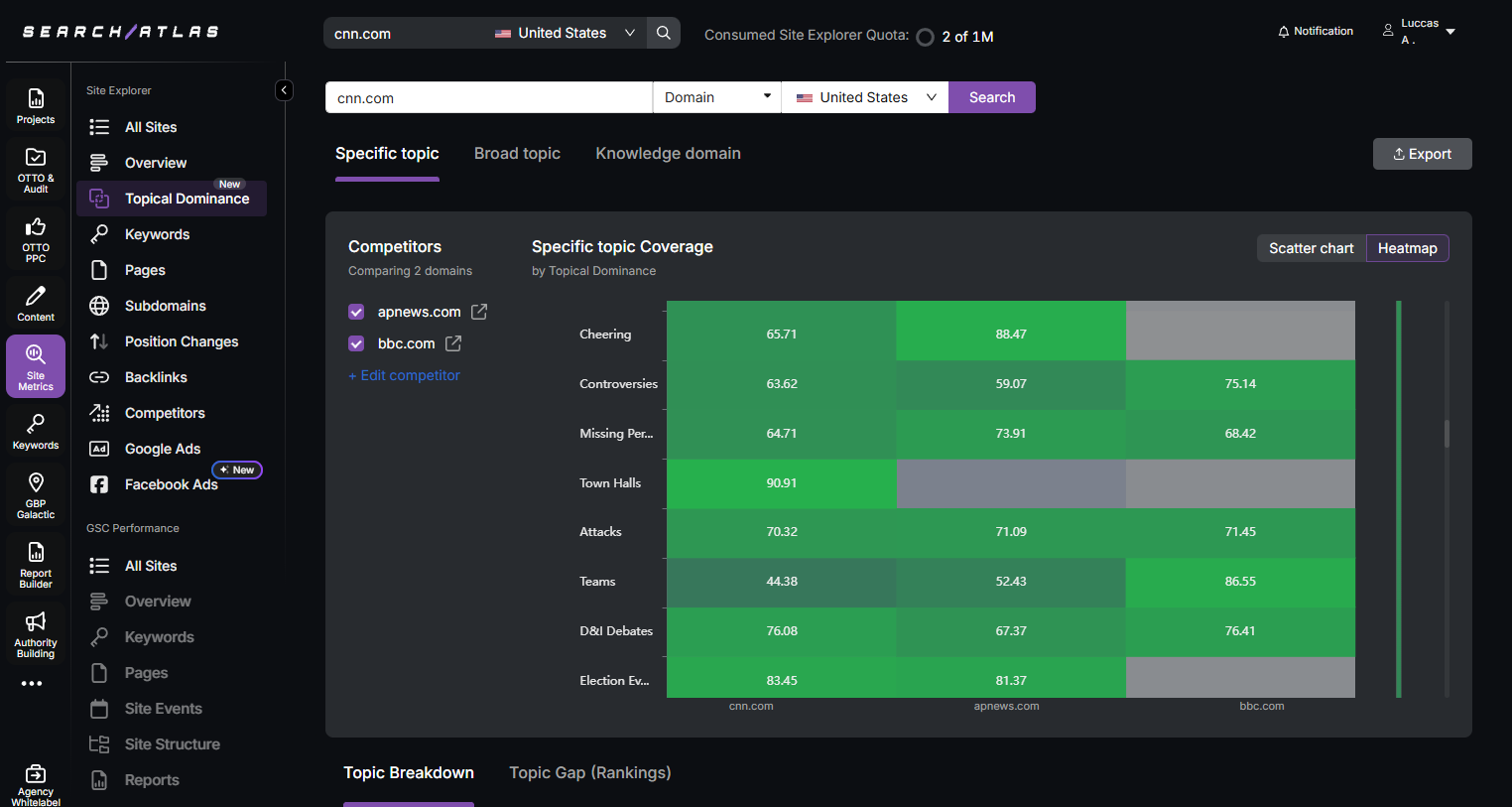
Write Content Briefs
Export your selected topics from the Content Planner into a spreadsheet to create your content calendar. Turn each topic into detailed plans for your writers. Include the main keywords, what readers want to learn, what competitors wrote about, and how long each article needs to be. Share these briefs directly with your writing team.
Write the Articles
Follow your brief to create helpful, readable content. Answer what readers want to know while naturally including your target keywords. Use clear headings and break up text so people find it easy to read.
Edit Your Work
Check your writing for mistakes and make it clearer. Remove extra words, fix confusing sentences, and make sure everything flows well. Double-check your facts and keep your brand voice consistent.
Review for Search Engines
Make sure your article works well for search engines. Check your titles, descriptions, headings, and links to other pages on your site. Include keywords where they make sense without overdoing it.
Publish Your Content
Put your article online according to your content calendar schedule. Share it on social media and tell your team it's live. Keep an eye on how it performs right after publishing.
Check Your Results
Track how well your content ranks in search results and how many people visit and engage with it. Use reporting tools like Google Analytics to understand the results. Use what you learn to make your next content even better.
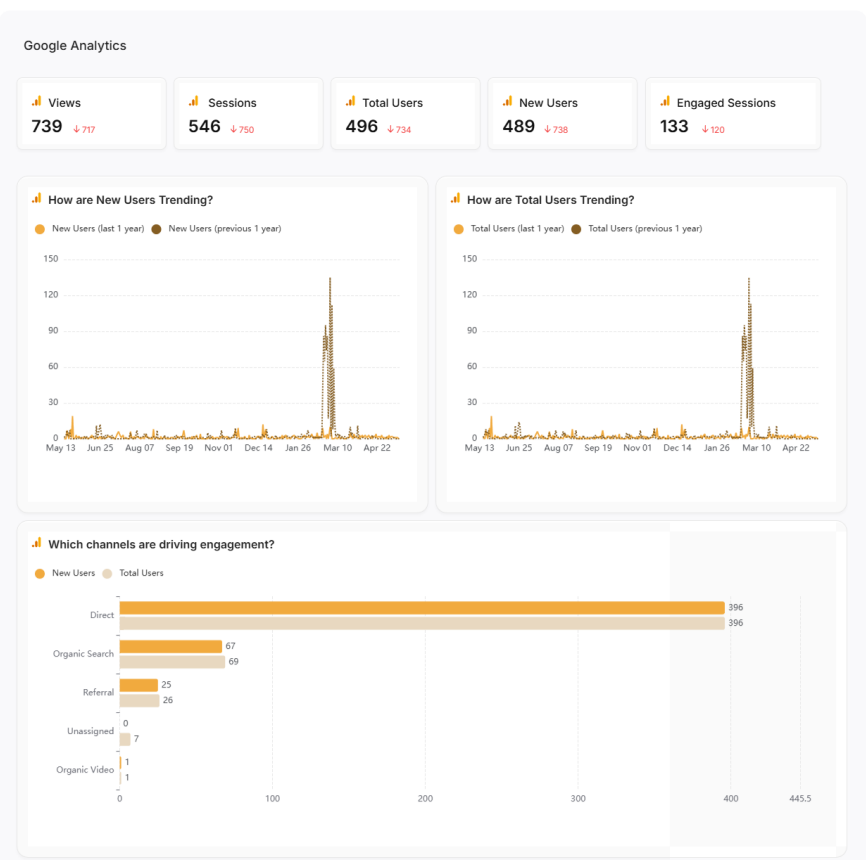
2. Identify your audience
To identify your audience, follow the steps outlined below.
Analyze Your Current Data
Check Google Analytics to see who visits your site, what pages they read, and how long they stay. Review social media insights to understand which posts get engagement and what demographics interact with your content. Read customer feedback, reviews, and support tickets to learn what people say about your business.
Create Audience Personas
Build profiles of your ideal readers based on real data. Identify their biggest problems, daily challenges, and goals. Determine their experience level with your topic (beginner, intermediate, expert).
Research Their Content Preferences
Find out what type of content your audience wants. Do they prefer quick tips, comprehensive guides, or educational stories? Look at popular content in your niche to see what formats perform best. Check comments on competitor posts to see what questions people ask.
Ask Your Audience Directly
Send surveys to your email list asking about their biggest challenges and preferred content types. Read comments on your existing content to see what resonates. Join online communities where your audience participates and observe their conversations.
Study Their Content Consumption Habits
Notice how your audience consumes information. Do they prefer short blog posts, long-form guides, or video content? Check when they're most active online and what devices they use. Match your content format and publishing schedule to their habits.
3. Ensure the content is relevant and matches user intent
Match your content to what searchers actually want when they use specific keywords. Google rewards pages that satisfy user intent, making this alignment critical for rankings. We explain the four types of search intent below.
- Informational intent seeks knowledge and answers, often starting with "how," "what," or "why"
- Navigational intent targets specific websites or pages
- Transactional intent shows readiness to purchase or take action, using terms like "buy" or "free trial"
- Commercial intent involves researching products or services before making decisions
Use Google Search Console to identify intent gaps. Check which search terms drive traffic to your pages and measure how well they satisfy user expectations. Track click-through rates from search results and time spent on page to gauge intent satisfaction. Low engagement often indicates content that doesn't match what searchers expected.
Map keywords to content using clusters. Organize your content around keyword clusters that share similar intent. Use Search Atlas Content Planner to generate clusters based on phrasing and intent similarity. Assign one page per primary intent cluster to prevent keyword cannibalization.
Evaluate content quality with Scholar. Scholar compares your content against top-ranking pages and identifies specific areas for improvement based on Google's ranking factors.
The metrics that Scholar evaluates are listed below.
- Content clarity, factuality, and human effort
- Information gain and user intent alignment
- Entity coverage and contextual flow
- Query relevance, readability, and content freshness
4. Use the right keywords
Use the Search Atlas Keyword Researcher to discover relevant keywords with search volume, cost-per-click, and keyword difficulty scores. Focus on keywords that match your content's purpose and audience search behavior
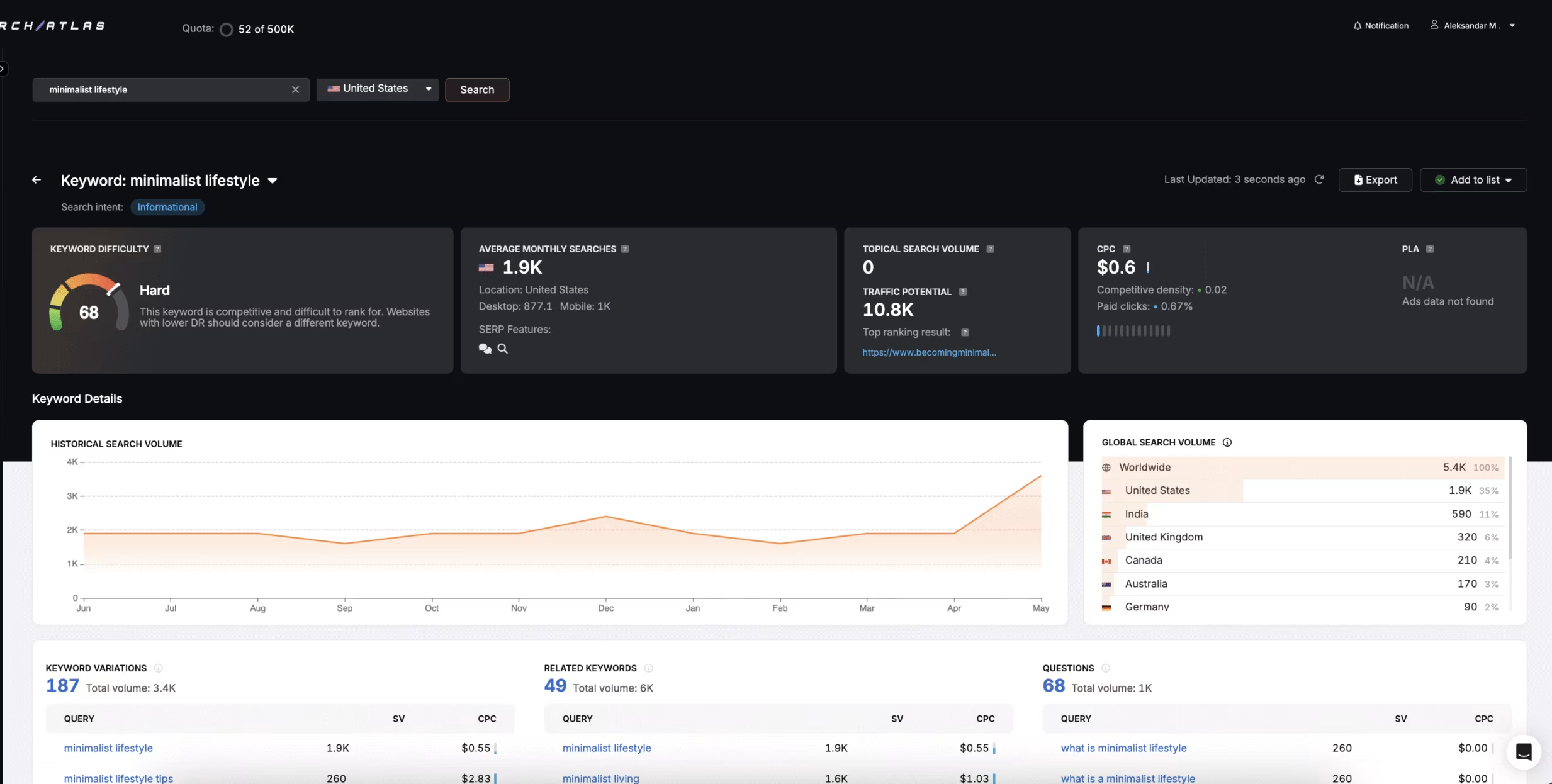
Study what keywords your competitors rank for that you might be missing. The Search Atlas Keyword Gap Analysis tool to identify opportunities where competitors get traffic but your site doesn't appear. This reveals keyword gaps you target to capture more market share.
Select keywords that match your content's search intent and your site's ability to rank. Balance high-volume terms with lower-difficulty options that offer realistic ranking opportunities.
Include longer, more specific keyword phrases that face less competition and often convert better. These keywords have clearer intent and attract users who know what they want. Use keyword research data to find long-tail opportunities connected to your main topic clusters.
5. Follow Google's E-E-A-T guidelines
Build content credibility by demonstrating real expertise and trustworthiness. Google uses E-E-A-T (experience, expertise, authority, trustworthiness) signals to evaluate content quality and determine rankings. Google E-E-A-T signals are explained below.
- Experience. Include first-hand insights and practical knowledge in your content. Share specific examples, case studies, and real-world applications that demonstrate you've actually worked with the topic you're writing about.
- Expertise. Display your knowledge and skills in the subject matter. Use accurate terminology, cite current research, and provide detailed explanations that show a deep understanding of your field.
- Authority. Build recognition as a credible source in your industry. Get mentions from other reputable sites, earn backlinks from authoritative sources, and maintain consistent quality across all your content.
- Trustworthiness. Ensure all information is accurate and reliable. Fact-check your content, cite credible sources, update outdated information, and be transparent about your qualifications and potential conflicts of interest.
6. Create and optimize the images
Optimize images to improve page speed, accessibility, and search rankings. Best practices for image SEO are listed below.
- Image Names. Create name image files with relevant keywords instead of generic names. Replace "IMG123.jpg" with "best-seo-tools.jpg" to help search engines understand the image content.
- Alt Text. Write clear descriptions under 125 characters that accurately describe the image content. Include relevant keywords naturally without stuffing. Avoid phrases like "image of" since screen readers already identify images. Search Atlas OTTO automatically adds alt text to streamline this process.
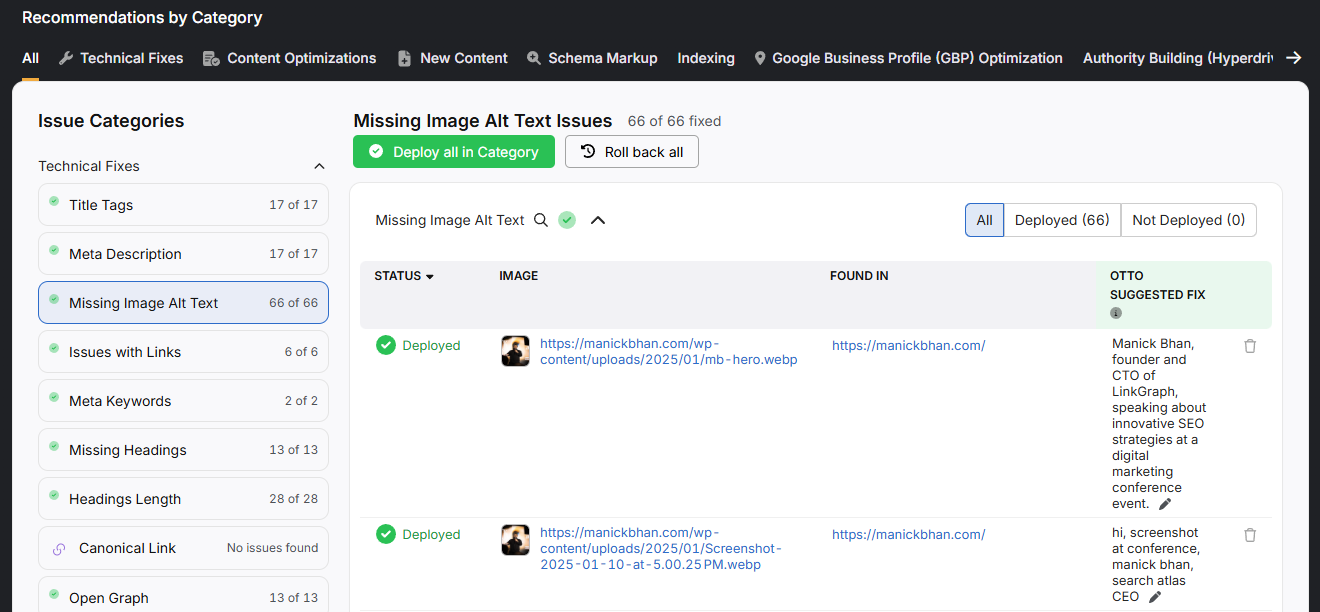
- Captions. Add captions that provide context and include relevant keywords when they enhance user understanding.
- File Sizes. Large images slow down pages, which hurts user experience and search rankings. Use compression tools to reduce file size while maintaining visual quality.
- User Value. Only optimize images that add value to your content. Skip alt text for purely decorative images to avoid disrupting assistive technologies.
7. Use multimedia
Add videos, GIFs, and interactive elements to increase engagement and expand your content's visibility in search results. Google surfaces multimedia content in image packs, video carousels, and rich results. Proper examples of multimedia use are explained below.
- Optimize Video Content. Embed YouTube videos near related text content since Google favors its owned platform in search results. Use keyword-aligned titles and descriptions. Rename video files with descriptive, keyword-based filenames before uploading. Apply video SEO best practices.
- Enhance Visual Elements. Include GIFs and images that support your content message and break up text sections. Use multimedia to explain complex concepts, demonstrate processes, or add visual interest.
- Apply Technical Optimization. Compress file sizes for faster page loads and better Core Web Vitals scores. Add concise, accurate alt text. Use schema markup like ImageObject and VideoObject.
- Expand Search Visibility. Place multimedia strategically to reduce bounce rates and improve time on site. Optimized multimedia content ranks in vertical search engines and creates additional traffic opportunities through Google's image search and video carousels.
8. Use internal linking
Connect related pages within your website to guide readers and help search engines understand your site structure. Internal links distribute ranking signals and improve crawl efficiency.
- Use Strategic Link Placement. Link from high-authority pages to content that needs visibility. Add links near the middle or end of paragraphs. Limit links per page to preserve value and avoid clutter.
- Write Descriptive Anchor Text. Use anchor text that reflects the target page's topic and tells readers what they'll find. Follow internal linking best practices.
- Prioritize Relevance. Only link pages that share search intent or topical overlap. Connect content within the same topic clusters to reinforce your site's thematic structure.
- Identify Link Opportunities. Search Atlas OTTO automatically finds internal linking opportunities and fixes missing connections.
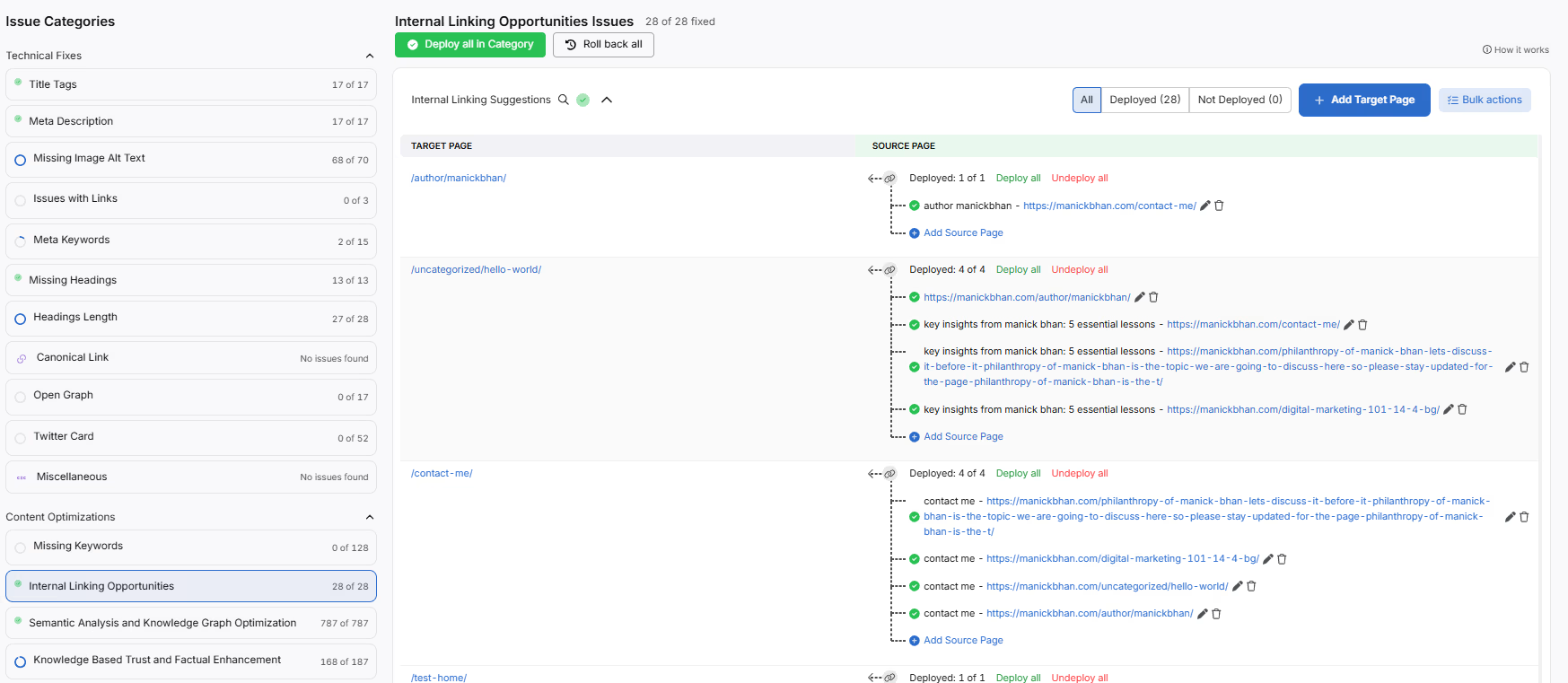
9. Use the best AI SEO tool
Search Atlas Content Genius is an AI writing tool that pulls real-time data from Google and uses specialized microagents to handle every aspect of content optimization. It builds comprehensive topical knowledge graphs using advanced web browsing techniques that no other tool offers.
Content Genius creates content as optimized "passages" that mirror Google's indexing model. Each section contains one heading answering one implied question, delivering compressed information density with more meaningful facts per word than competitors.
The tool uses dedicated AI agents to handle specific optimization tasks, including internal linking, factual accuracy, tone adjustment, and brand voice consistency. The fifth-stage microagent phase lets you refine, customize, or transform generated content by changing tone, adding sections, or switching perspective.
Content Genius follows a systematic approach: information retrieval from web sources, knowledge graph structuring, heading alignment, content brief generation, and synthesis with microagent refinement. This process ensures content meets high SEO, user experience, and authority standards.
10. Keep content fresh
Maintain content relevance through regular updates and strategic pruning. Fresh content signals to search engines that your site provides current, valuable information.
Focus on creating evergreen content that remains relevant over time and continue generating traffic months or years after publication. These pieces require fewer updates while maintaining strong search performance. Review and refresh your published content regularly by adding new information, updating statistics, fixing broken links, and expanding sections that need more depth.
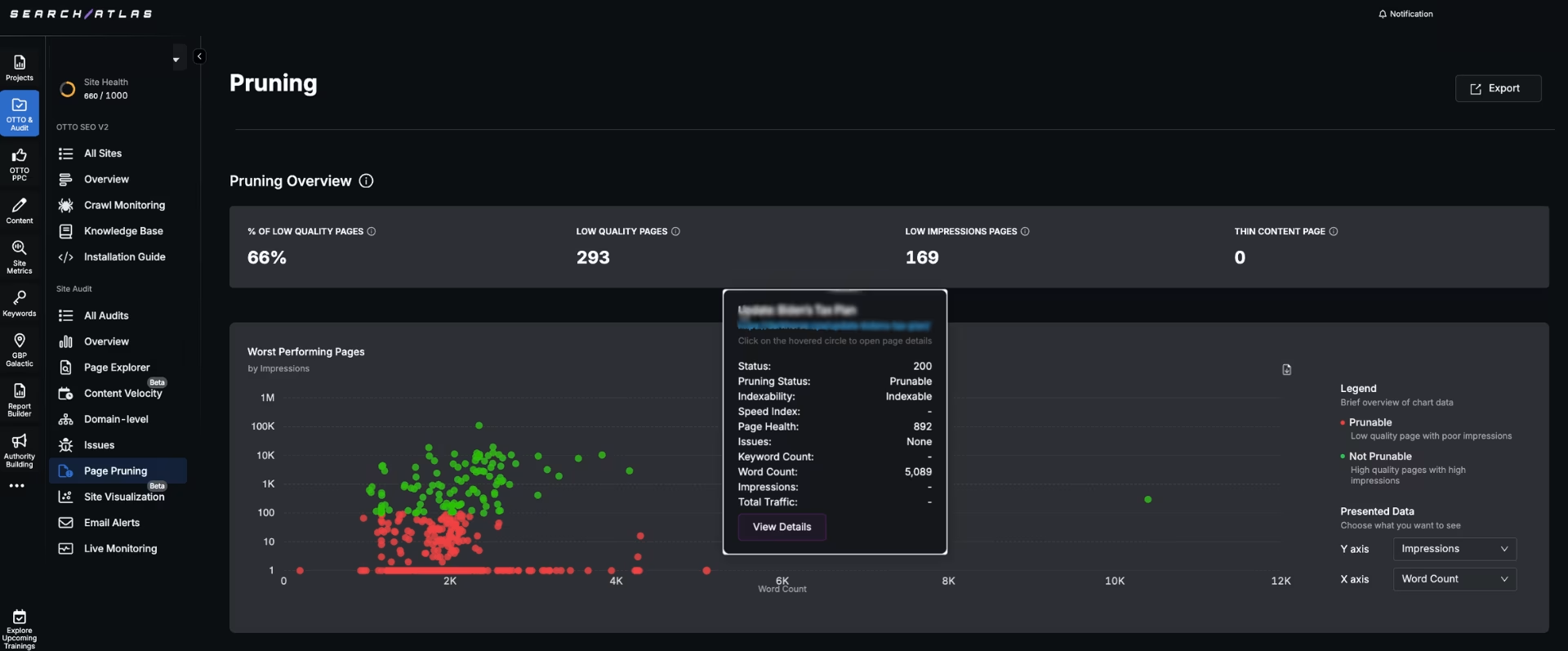
Use the Search Atlas Content Pruning Tool to identify pages that hurt your site's overall SEO health. The Content Pruning Tool detects thin, outdated, or ignored content based on impressions and traffic data. It filters weak content by identifying low-impression pages that rarely appear in search results, low-traffic pages that receive minimal clicks, and thin content pages with minimal value.




